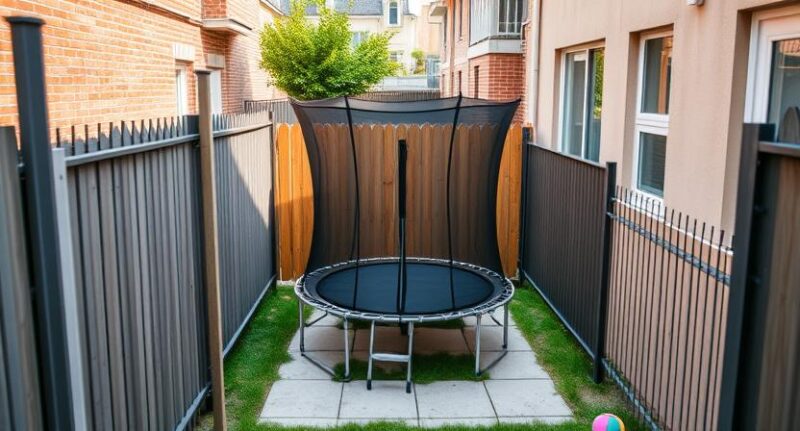Living in a city often means outdoor space is limited — squeezed between fences, cars, or buildings. But that doesn’t mean kids have to miss out on the fun of jumping and playing outside during summer. The real question becomes: how do you choose a trampoline that fits a tight yard and still keeps the fun alive?
It’s not about having the largest setup — it’s about finding something that brings joy and activity within the space available. In fact, smaller trampolines can sometimes be the smarter option: easier to care for, safer, and more adaptable to compact outdoor spaces.
Space-Saving Options That Actually Work
Not every trampoline requires two people, a whole afternoon, and an oversized corner of the yard. There are now designs made for tight city spaces that don’t compromise on play value or safety. Here are a few examples that tend to work well in limited areas:
-
Compact trampolines (roughly 140–250 cm wide): Perfect for a single child’s use, they require little space and are simple to set up. Many don’t even include steps, making them suitable for younger kids.
-
Internal net enclosures: These designs save exterior room while still keeping kids safely contained. The net stays close to the bouncing area.
-
Foldable models: These can be set up for daily use, then stored away at night. Some are even small enough to transport in a car trunk.
-
Trampolines with canopies: A small roof offers sun protection, making summer bouncing sessions more comfortable.
-
Square-shaped frames: These may be easier to fit into awkward spaces where round versions don’t quite work.
These options can transform even the smallest yard into a safe and joyful play zone, no matter how many flower pots or garbage bins are around.
What to Think About Before Buying
Before choosing a trampoline, it helps to physically measure your outdoor space — not just to fit the structure itself, but to ensure there’s room to move around it. Kids rarely bounce in place: they run, fall, climb the edges, and often like to keep their water bottles or toys nearby.
Don’t forget the surface it will stand on. Whether it’s grass, sand, or concrete, the ground can impact how stable the trampoline feels. Some require extra anchors or supports, especially on harder surfaces.
Joy Isn’t Measured in Meters
One parent shared how their child uses a small trampoline every single day and never asks for a bigger one. For him, it’s his “rocket ship” — full of adventure, imagination, and motion. It’s a good reminder that children care more about the experience than the size.
To see what types are most popular among families in similar living conditions, look into what other apartment dwellers have found useful — their choices are often driven by practicality and space efficiency.
Sometimes, the smallest addition to your yard brings the biggest boost in movement, energy, and happiness. The key is choosing something thoughtful, not just large.
